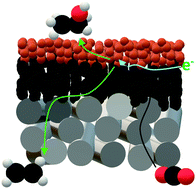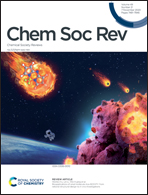Gas diffusion electrode design for electrochemical carbon dioxide reduction
Abstract
Anthropogenic carbon dioxide (CO2) emissions contribute to the greenhouse effect and global warming, which can lead to undesirable climate change and extinction of species. Besides the ongoing efforts to develop environmentally benign sources of energy and to advance technologies for the capture and sequestration of CO2, the transformation of emitted CO2 into valuable products is a pragmatic solution to curb its accumulation in the atmosphere. In this regard, electrochemical CO2 reduction (ECR) powered by renewable electricity provides an attractive approach because it not only converts CO2 to valuable fuels and chemicals but also offers a solution for the long-term storage of intermittent renewable energies. In ECR, the gas diffusion electrode (GDE) is the most critical component and has been the subject of intensive research in the last few years. This tutorial review provides an insightful guide to developing GDEs with high activity, selectivity, and stability, the three important performance metrics in ECR. First, we introduce critical fundamentals of ECR, including the chemical and physical phenomena at the electrodes as well as the electrochemical cell configurations. Next, we discuss recent advances in GDE design, focusing on their structure–performance correlation and fabrication techniques for each component of GDEs. Finally, we discuss the remaining challenges and propose promising research directions for the design of efficient GDEs. This review aims at promoting the development of industrially relevant ECR systems to bring this technology to practical applications.



 Please wait while we load your content...
Please wait while we load your content...